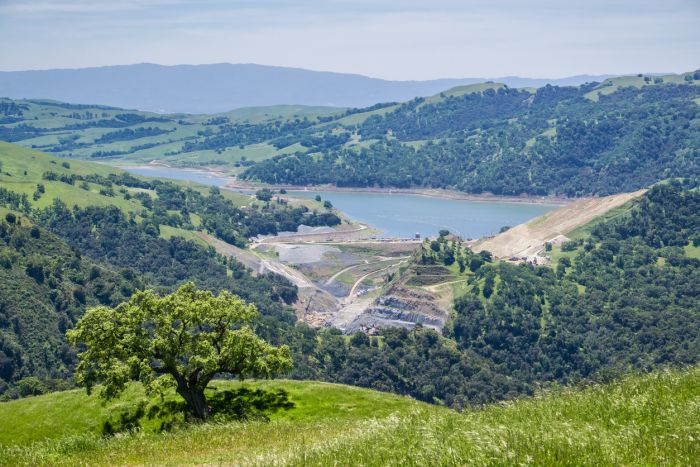



Natural disasters occur everywhere, and California is no exception. When wildfires were rampant across the state, California required workers to work indoors with limited outdoor use. The system implemented for the San Francisco Public Utilities Commission (SFPUC) helped in this case.
The Calaveras Dam, located in unincorporated Alameda County in the San Francisco Bay Area, was originally built in 1913 and replaced in 1925. It was the world’s largest earth-fill dam at the time. Rebuilding began in 2011, nearly 100 years after its initial construction, and in 2019, the project was completed. This dam is in a remote location that can be difficult to access in inclement weather, so getting manual measurements is time intensive. The SFPUC wanted to find a solution to overcome this challenge.
The dam was filled to full capacity in April of 2023, four years after the construction was finished. For the last decade, the dam has been filled to 25% capacity due to earthquake concerns. Being filled to full capacity is significant because the new Calaveras Dam at the Calaveras Reservoir is the SFPUC’s largest Bay Area reservoir and provides almost half the system’s Bay Area storage capacity for 2.7 million customers.
The SFPUC collaborated with AECOM, Terracon, and Campbell Scientific to find a solution to automate the dam monitoring. The installed automated monitoring platform, also known as an automatic data acquisition system (ADAS), was configured to allow water system operators and engineers to receive real-time data. Along with this data, the team implemented alarm systems to alert the operators and engineers when the dam exceeds the threshold level and rate of change in the instrumentation reading. When this happens, the alarm will detect any equipment malfunction.
The platform has been beneficial to the SFPUC. During the last storm season, a mudslide occurred and the road leading to the new Calaveras Dam was closed. The reservoir was still being filled, so SFPUC operators were required to have a daily inspection report along with a weekly report. They were able to continue receiving data without interruption and were able to follow state regulations.
Although the SFPUC can’t reduce the frequency of the inspection, monitoring, or reporting, “the ADAS system has helped speed up the data reporting process and given us the ability to monitor the performance of the dam in real time,” said Stacie Feng, SFPUC senior engineer. The convenience of the system has helped SFPUC save time, but there is a moderate learning curve that requires support on the electronic front. Mark Wallace, Campbell Scientific consultant and system designer, has been an ongoing support while SFPUC operators learn the electronic and IT side of things. “He provides remarkable services. He’s responsive and knowledgeable with a penchant to help,” Feng said.
The engineers on the project collaborated with Campbell Scientific to install the equipment needed for this dam. They were looking for equipment to work in tandem with their technology that would stand the test of time. Matthew Hyatt, AECOM’s lead engineer, said, “Communication between all four companies was an important factor. We were able to find solutions quickly and easily.”